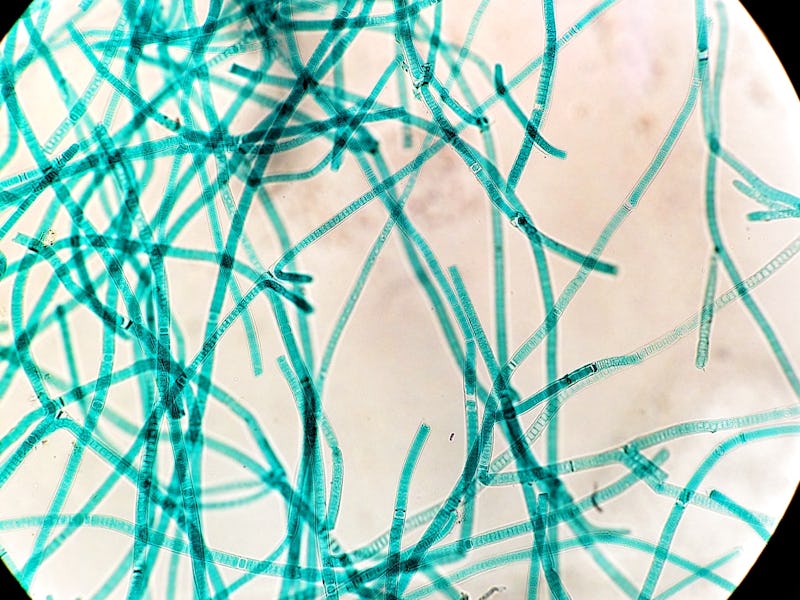The First Forms of Life on Mars? These 5 Micro-Organisms Are Ready to Leave Earth
If we ever bring other forms of life to Mars, here’s what stands the best chance of surviving.

Mars is a reddish hell and an inconvenient one to visit. The planet is a dry, barren wasteland where surface temperatures average -67 degrees Fahrenheit and can dip as low as -243 degrees. Yes, there’s water on the surface, but only in very specific, remote places. Gone are the vast lakes and oceans of the ancient Martian past. And with a thin atmosphere and a decimated magnetic field, the planet is buffeted by intense amounts of solar radiation.
It ain’t the kind of place to raise your kids.
Nevertheless, if everything goes according to plan, your children might actually be raising your grandkids on Mars. In order for that to happen, we’ll need to colonize and terraform, sure, but we’ll also need to bring along a fair amount of non-human life. The organisms that we allow to go free-range on the Red Planet will be the point of the biological spear. They have the potential to make the planet more hospitable — to do the sort of colonizations we cannot.
Here are the micro-astronauts we’re going to send the 140 million miles to establish a biological basecamp.
Cyanobacteria
Plants use photosynthesis to make their own energy. So do cyanobacteria. They are the organisms that are thought to have played a pivotal role in transforming Earth’s atmosphere from one inhospitable life into an oxygen-free environment for aerobes to thrive. In short, they have a history of making things work in pretty harsh environments.
A study published last year by researchers in Germany found that cyanobacteria were able to survive and reproduce in conditions relatively similar to Mars — UV radiation, low pressure, temperatures skewing pretty cold, etc. They didn’t just manage to huddle together and live — they stayed active, and kept up with their regular metabolic functions.
Funguses
When you stick cyanobacteria (or algae) together with funguses, they form lichens — which were also shown by the aforementioned study to survive Martian conditions. So it comes as little surprise that funguses alone might stand a chance to thrive on Mars.
We’re specifically talking about polar funguses that can withstand extremely cold and dry climates. A new study demonstrated the ability of one particular Antarctic fungal species to survive under Mars-like conditions (in the International Space Station to also emulate microgravity settings) while retaining more than 60 percent of its cells after 18 months. There’s no reason to think such a species could evolve fast enough to fully adapt to the Martian weather and pressure in order to bump that rate close to 100 percent.
Methanogens
Methanogens are a type of bacteria that can use hydrogen and carbon dioxide as metabolic constituents for energy, and produce methane as a byproduct. Since they don’t require oxygen or organic nutrients for survival — and don’t conduct photosynthesis — they’re an ideal organism for subsurface environments, especially on Mars.
Last year, some researchers decided to see if methanogens really could live on Mars. They exposed four different species to low pressure conditions similar to what would be expected just below the surface of the planet.
The results? All four methanogen species were able to survive. Two were previously known to be able to survive the Martian freeze-thaw cycles.
The bigger implication here, as well, is that methanogens could perhaps play a strong role in helping to revive Mars’ atmosphere into something that could allow surface water to come back to the planet. This would require finding a way to bring back the planet’s magnetic field, but let’s let other scientists worry about figuring that one out.
Oligotrophs
On Earth, an oligotroph is a catchall term for any organism that can survive on very low levels of nutrients — as in, the bare minimum. They grow slow, use energy at very low rates, and have extremely low populations.
Olm
And for those reasons, they may be just what is able to survive what Mars throws at life. One such oligotrophy is the olm — a cave-dwelling aquatic salamander that eats, breathes, and sleeps entirely underwater. If subsurface water exists on Mars, the snake-like olms would be a top candidate to make a home in those very dark and empty habitats.
Deinococcus radiodurans
This is the most radiation-resistant life form found on Earth. D. radiodurans, nicknamed “Conan the Bacterium” for its incredible toughness, can withstand doses of radiation thousands of times higher than what would easily vanquish a human being. The bacterium can also withstand extreme colds, and have a habit of finding homes in the subsurface of our planet.
It’s not unthinkable that D. radiodurans could quite easily hitch a ride as a stowaway on a spacecraft, survive the journey, and end up managing pretty well on the red planet. Unlike the other organisms on this list, the bacterium wouldn’t even need to find a specific habitat in order to live — it could perhaps make due whenever it ended up.